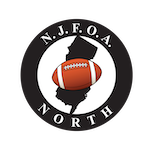Interpreter Commentary on NFHS Rule 10
Submitted by Bob Masucci on Thu, 06/29/2023 - 1:59pm Welcome to the beginning of a new football season.
Welcome to the beginning of a new football season.
You will be picking up your rule book packets shortly. Here is ONE WORD OF CAUTION:
While there are several rule changes/updates for the 2023 season, the one that stands out is the new rule on penalty enforcement. The Federation Editorial Committee did a less than stellar job on this one in the rule book. Not only are the updated rules 10-4, 10-5, and deletion of 10-6 (all highlighted in gray) basically incomprehensible, the rules as written— and the accompanying table — contain errors. They have made this rule book update error-ridden and much more complicated than necessary. I have confirmed this with members of the NFHS Rules Committee who concur with my assessment..
I have been working with Rules Committee members and thought leaders across the country to develop a better means of introducing our members to these new enforcement procedures. Several methodologies have been discussed and we have all come to a consensus on delivery. But for now:
DO NOT ATTEMPT TO READ OR INTERNALIZE THE NEW HIGHLIGHTED RULE 10 SECTIONS. I will present at our General Interpretations meeting in August a much more streamlined and understandable means internalizing the new enforcement rules.
Please note that all other rule changes for 2023 are correct and written correctly in the book. Feel free to begin studying and understanding those. It is ONLY the rule 10 changes that present a problem.
About The Interpreter:
Bob Masucci is a retired information technology contracts manager. Residing in Clinton Township, NJ, Bob is a 43-year football official. During these years as a top official, he has officiated in countless state playoff games, including an infintesmal amount of NJSIAA State Finals.
As an active member and current President of the North Jersey chapter of the New Jersey Football Officials Association, he has participated in the training and mentoring of new officials and has independently developed a wide array training materials that are used by Referee Magazine and countless football officials associations nationwide.




